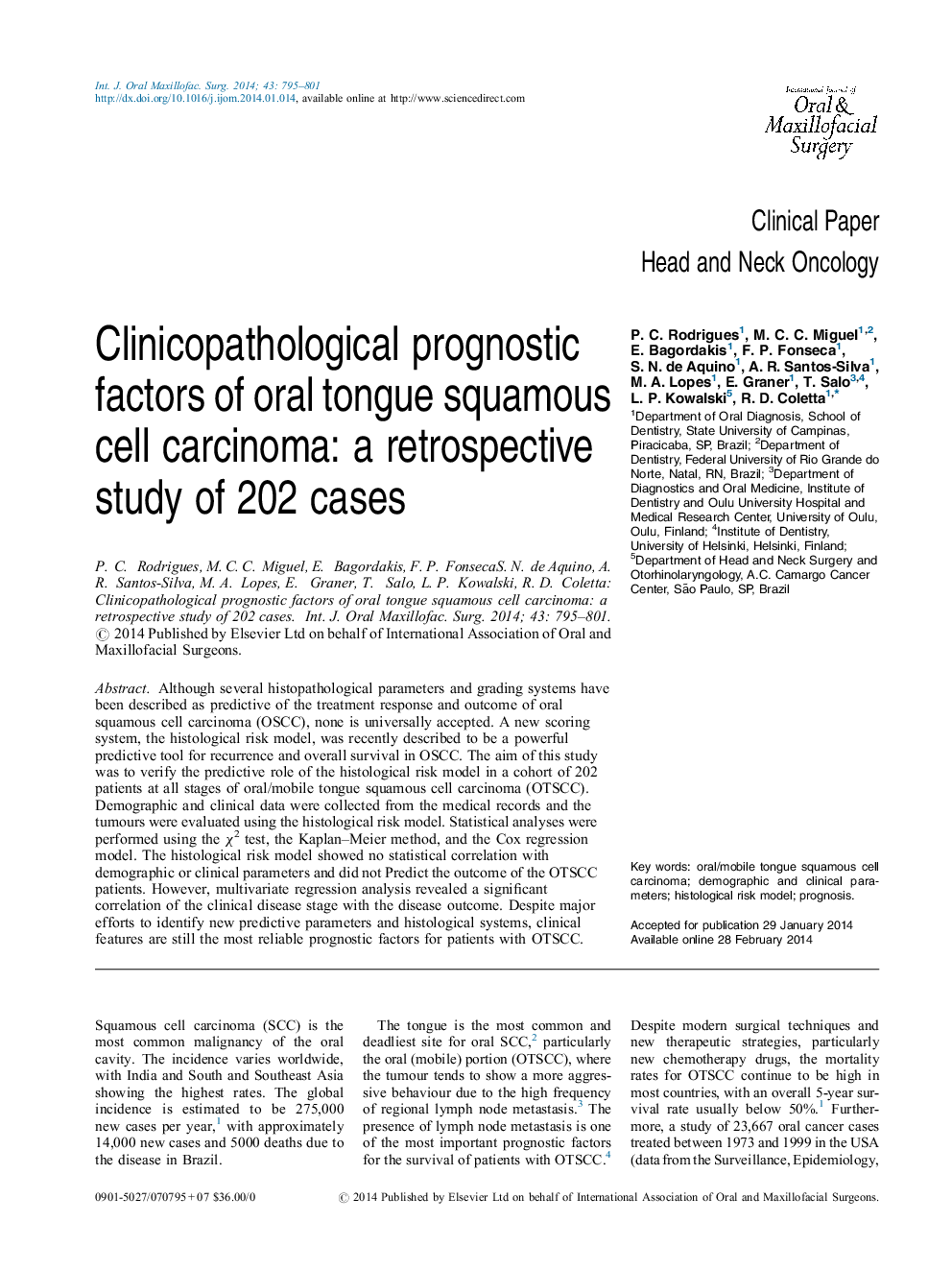| Article ID | Journal | Published Year | Pages | File Type |
|---|---|---|---|---|
| 3132475 | International Journal of Oral and Maxillofacial Surgery | 2014 | 7 Pages |
Although several histopathological parameters and grading systems have been described as predictive of the treatment response and outcome of oral squamous cell carcinoma (OSCC), none is universally accepted. A new scoring system, the histological risk model, was recently described to be a powerful predictive tool for recurrence and overall survival in OSCC. The aim of this study was to verify the predictive role of the histological risk model in a cohort of 202 patients at all stages of oral/mobile tongue squamous cell carcinoma (OTSCC). Demographic and clinical data were collected from the medical records and the tumours were evaluated using the histological risk model. Statistical analyses were performed using the χ2 test, the Kaplan–Meier method, and the Cox regression model. The histological risk model showed no statistical correlation with demographic or clinical parameters and did not Predict the outcome of the OTSCC patients. However, multivariate regression analysis revealed a significant correlation of the clinical disease stage with the disease outcome. Despite major efforts to identify new predictive parameters and histological systems, clinical features are still the most reliable prognostic factors for patients with OTSCC.
